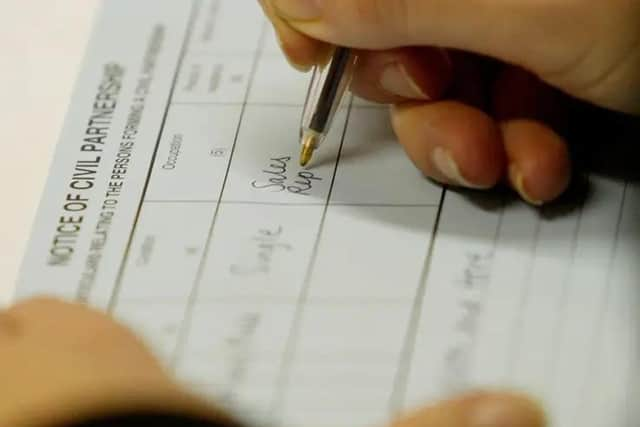Over eight times as many opposite-sex civil partnerships as same-sex unions in Hertfordshire last year
and live on Freeview channel 276
There were over eight times as many opposite-sex civil partnerships as same-sex partnerships in Hertfordshire last year, figures reveal.
A change in the law around civil partnerships saw them extended to opposite-sex couples from December 2019, and the first of these in England and Wales took place on December 31 that year.
Advertisement
Advertisement
Office for National Statistics figures show 136 opposite-sex couples in Hertfordshire formed civil partnerships in 2021, compared to 16 same-sex civil partnerships.


There have been 358 opposite-sex civil partnerships in Hertfordshire since a Government change to the law – 217 were formed in 2020 and five on New Years' Eve 2019.
Previously, only same-sex couples could enter into civil partnerships, but in June 2018, the Supreme Court ruled that this was incompatible with the European Convention on Human Rights.
Around 13,400 opposite-sex couples across England and Wales have formed civil partnerships since the end of 2019.
Advertisement
Advertisement
Martin Loat, of the Equal Civil Partnerships campaign group, said: "Nearly 6,000 couples formed a mixed-sex civil partnership in 2021. That's a lot of people – and families – who are now in a secure relationship, legally and financially, who obviously wanted an alternative to marriage.
"The number is lower than in 2020, but we know that many many couples were waiting for the opportunity to have a civil partnership and preferred to remain unmarried otherwise. The pent up demand, despite Covid restrictions, natuarally boosted the number in its first year."
The popularity of same-sex civil partnerships across England and Wales has plummeted since the first legalised gay marriages took place in 2014.
In 2021, just 1,039 took place – down significantly from 14,900 in 2006, the first full year in which same-sex couples could form a civil partnership.
Advertisement
Advertisement
Rich Pereira, deputy director of demography at the ONS, said: "In 2021, the majority of civil partnerships continued to be between opposite-sex couples, following their introduction in late 2019.
"Current data show the age distribution of people forming opposite-sex civil partnerships is older than those forming same-sex civil partnerships.
"Those forming opposite-sex civil partnerships are more likely to have been previously married or civil partnered than those forming same-sex civil partnerships."